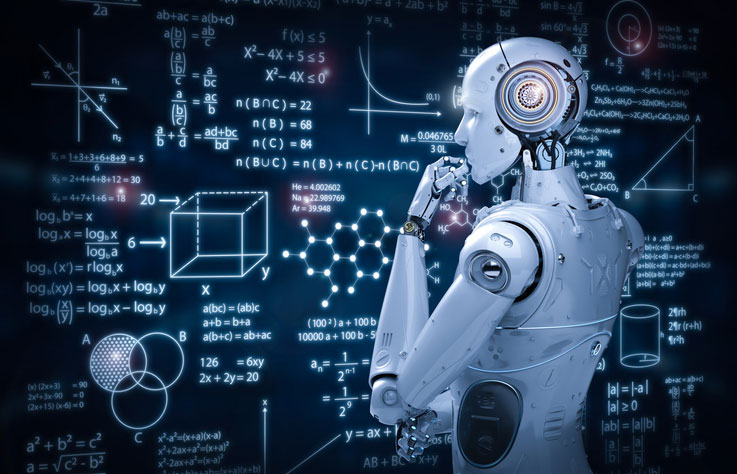The Complete Guide to AI & Machine Learning
Artificial Intelligence (AI) and Machine Learning (ML) have revolutionized the way businesses, industries, and individuals interact with technology. From virtual assistants like Siri and Alexa to self-driving cars and predictive analytics, AI and ML are shaping the future. This guide will walk you through the key concepts, applications, and future trends of AI and ML.
1. Understanding AI and Machine Learning
What is Artificial Intelligence?
Artificial Intelligence refers to the simulation of human intelligence by machines. It enables computers to perform tasks that typically require human cognition, such as problem-solving, decision-making, and language understanding.
What is Machine Learning?
Machine Learning is a subset of AI that allows computers to learn from data and improve over time without being explicitly programmed. It uses statistical techniques to enable systems to recognize patterns and make predictions.

2. Types of Machine Learning
- Supervised Learning – The model is trained on labeled data, meaning it learns from input-output pairs. Examples include:
- Spam detection in emails.
- Fraud detection in banking.
- Unsupervised Learning – The model identifies patterns in unlabeled data. Examples include:
- Customer segmentation in marketing.
- Anomaly detection in cybersecurity.
- Reinforcement Learning – The model learns by interacting with its environment and receiving rewards or penalties. Examples include:
- AI-driven game playing (e.g., AlphaGo).
- Self-driving cars optimizing navigation.
3. Key Components of Machine Learning
- Data Collection – The process of gathering relevant data for training the model.
- Data Preprocessing – Cleaning and organizing data to remove inconsistencies.
- Feature Engineering – Selecting the most relevant variables that impact the model’s outcome.
- Model Training – Using algorithms like Decision Trees, Neural Networks, and Support Vector Machines to build predictive models.
- Evaluation & Optimization – Assessing the model’s performance and fine-tuning it for better accuracy.
4. Applications of AI and Machine Learning
Healthcare
- AI-powered diagnostic tools help detect diseases like cancer at an early stage.
- Predictive analytics assist in personalized treatment recommendations.
Finance
- Fraud detection algorithms identify suspicious transactions in real-time.
- AI-driven trading bots optimize investment decisions.
E-commerce
- Personalized product recommendations enhance user experience.
- Chatbots provide 24/7 customer support.
Automotive Industry
- AI assists in the development of autonomous vehicles.
- Predictive maintenance prevents mechanical failures.
Entertainment
- AI curates personalized content recommendations on platforms like Netflix and Spotify.
- AI-generated art and music push creative boundaries.
5. Popular AI and Machine Learning Algorithms
- Linear Regression – Used for predicting numerical values based on input features.
- Decision Trees – A model that splits data into branches for decision-making.
- Neural Networks – Mimic the human brain to recognize patterns and make predictions.
- Support Vector Machines (SVM) – Classifies data points by finding the optimal boundary.
- K-Means Clustering – Groups similar data points together in an unsupervised manner.

6. The Future of AI and Machine Learning
AI and ML are evolving rapidly, with new breakthroughs occurring regularly. Here are some trends to watch for:
- Explainable AI (XAI) – Making AI decisions more transparent and understandable.
- Edge AI – Running AI models on local devices instead of cloud-based servers for faster processing.
- AI in Cybersecurity – Enhancing threat detection and response mechanisms.
- AI Ethics & Bias Reduction – Developing fairer, more responsible AI systems.
- Quantum AI – Leveraging quantum computing to solve complex AI problems faster.

Final Thoughts
AI and Machine Learning are shaping the future across multiple industries. Whether you’re a business leader, developer, or enthusiast, understanding these technologies can open new opportunities. Investing in AI skills and staying updated with emerging trends will be crucial for success in the AI-driven world.

